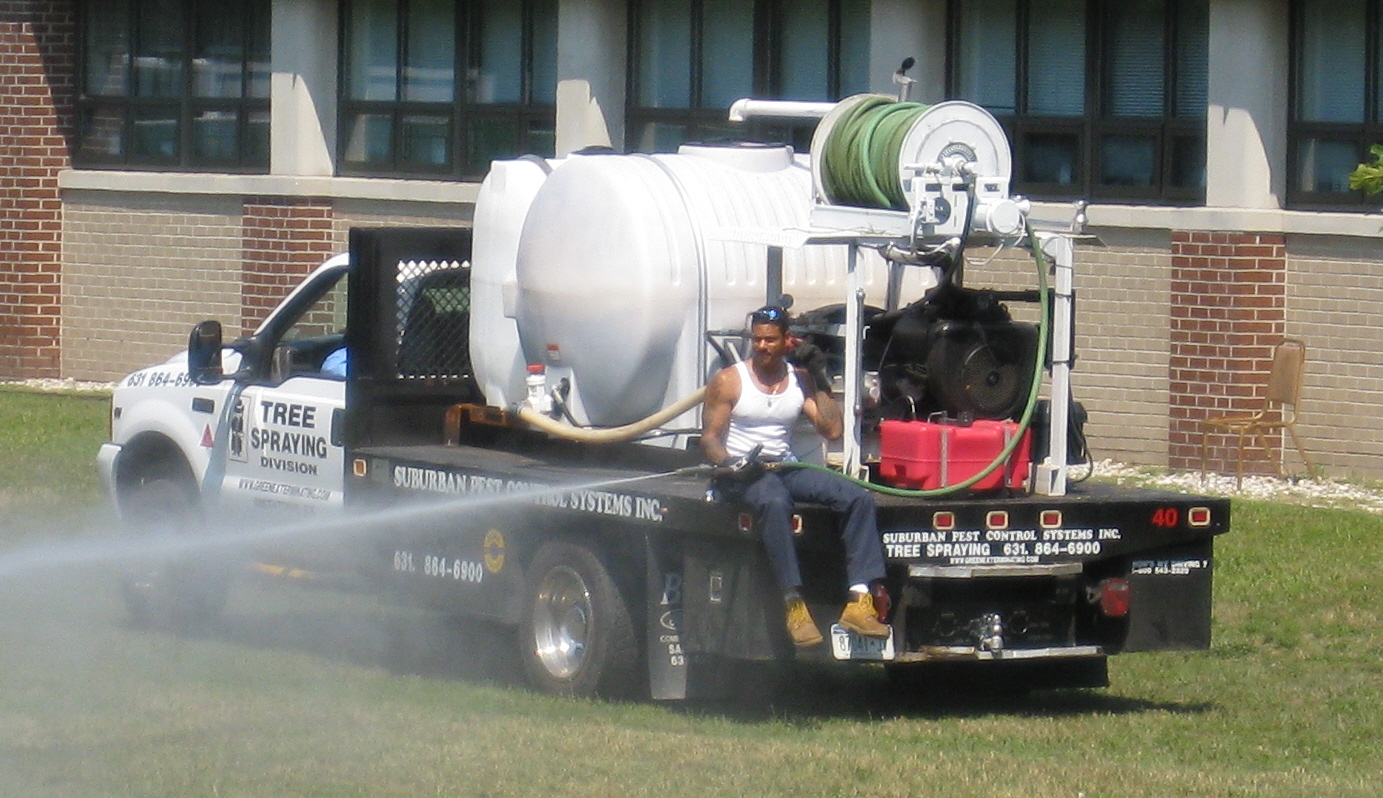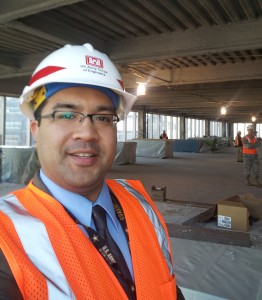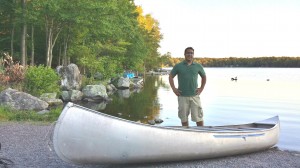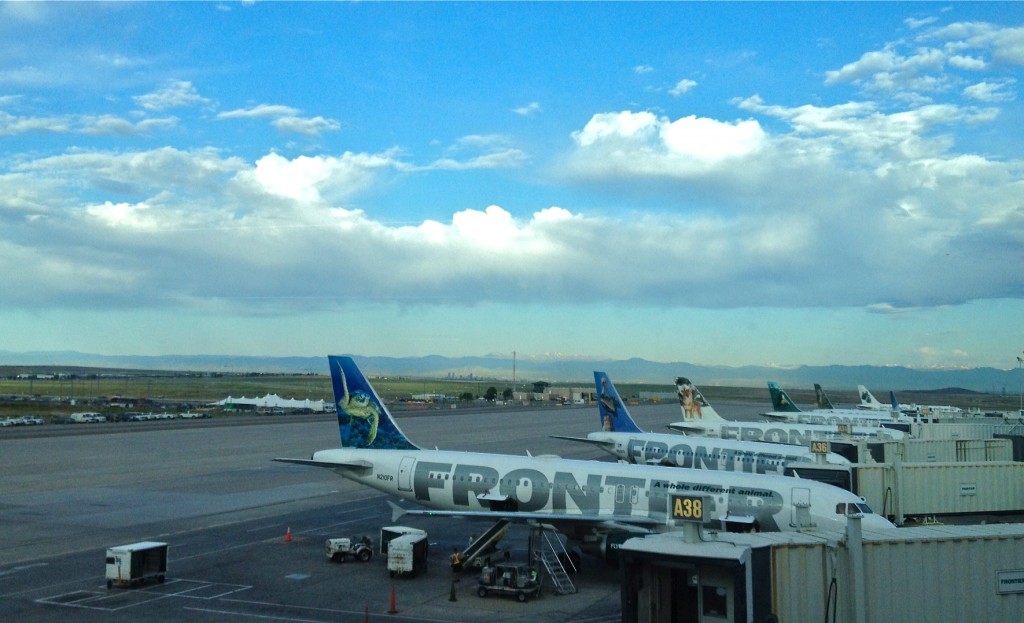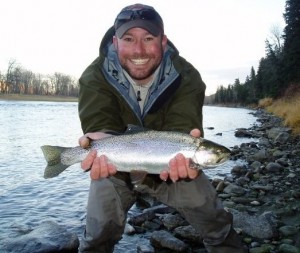My work in the environmental field has dealt with either technical or compliance issues. I rarely get into the network of policy, legislation, and the non-profit organizations making significant impacts on our environmental community. That is why I was excited to talk with Anna Zawisza, the Interim Executive Director for the Alliance for Sustainable Colorado, whose mission is to advance sustainability through collaboration among nonprofits, business, government and education.
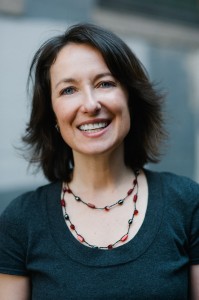 Anna and I know each other through our network of friends in Denver and have skied together, but this is the first time we got together to talk specifically about our roles working in the environmental field. We met at the Wynkoop Brewery in Denver to talk about her work with the Alliance for Sustainable Colorado, her passion for the work, how she fell into the environmental field, and that sustainability is not just an environmental word. With people like Anna driving for change in our world, I’m confident that we’ll get where we need to.
Anna and I know each other through our network of friends in Denver and have skied together, but this is the first time we got together to talk specifically about our roles working in the environmental field. We met at the Wynkoop Brewery in Denver to talk about her work with the Alliance for Sustainable Colorado, her passion for the work, how she fell into the environmental field, and that sustainability is not just an environmental word. With people like Anna driving for change in our world, I’m confident that we’ll get where we need to.
The National Environmental Professional (TNEP): You make a distinction between “Environmental Professional” and sustainability?
Anna Zawisza (AZ): So many people really focus on environment only. For us, unless we’re looking at what in the sustainability field we call the triple bottom line, which is people and profit or society and economy in addition to environment and the planet, you’re really not having a holistic approach because all those three are intertwined. So the way I look at it or think about it is, if you can’t feed your family or pay your bills you’re never going to be concerned about climate change or even recycling, which is the lead-in for people to get into environmental issues. It’s not even on your radar. So you’ve got to be able to look at the economic factor and how the whole human condition impacts all of it. Without people on this planet, we wouldn’t have the issues we’re having, right?
We talk about all three together. So I don’t consider myself an environmental professional. I consider myself a sustainabiity professional.
TNEP: That’s good to hear you say. When I go to your website or think sustainability, the first thing on my mind is the environment.
AZ: Sustainability is more than an environmental movement. But it is really the way that we are perceived, so we have been pigeonholed into that.
TNEP: Since you aren’t an environmental professional, how do you answer the question, “What do you do?”
AZ: That depends. If I’m trying to be really upfront and direct, I say, “I’m the Programs Director at a sustainability non-profit that works state-wide”, and then I go into what I do. If I’m trying to be a little tounge-in-cheek, I say, “I’m trying to save humanity from themselves.” Ultimately that’s what this is about. The planet’s going to be around long after humans are gone. So what we’re trying to do is actually save the human species from ourselves.
TNEP: That’s much bigger than what I’m doing.
AZ: Well sometimes it’s so big that it gets to be difficult. It’s tongue in cheek, but ultimately what the goal here is to make people aware of how unsustainable we’ve become. Everything is disposable. Everything is immediate. If you look at Wall Street, we report profits on a quarterly basis these days and unless it makes sense to do on a quarterly basis, companies don’t do it. Then there are companies like Unilever that made the decsion, not that long ago, to say we’re not looking quarterly anymore. We’re going to look annually. We’re going to look 5 and 10 years out.
What we’re asking humans to do is look 50 years out, 100 years out. Which is so counterintuitive to how we process that it’s a huge disconnect.
TNEP: Do you find that more of your work is geared more toward environmental issues or is it getting that message out? What do you see as bigger?
AZ: I think they’re weighted equally. We tend to lead with the environment, because the organization I’m involved with was founded on the premise that the habitability of this planet is at risk, largely due to climate change. So what we need to do is pull forces together to address that biggest issue. The issue is only an issue because we have humans that need to feed their families on the planet. We lead with the environmental side, but all three need to be looked at holistically as important as the other.
TNEP: When you interact with people and organizations, are they on your side already or are some resistant? How do those different sides feel about you?
AZ: We are guilty of talking and preaching to the choir. There are organizational tendancies. We know our sustainabiltiy leaning freinds, but we all have to address these issues together. A mission of advancing sustainbiility is about collaboration and bringing in business and government and non-profit and academia into the same conversation to say, “No one organization, no one person, no one leader, no one country is going to be able to solve this.”
It is solveable. We have technologies today that can solve the climate change issue. We’re just not at the point yet where we’re willing to do what’s necessary, i.e. sacrifice short term profits, to make that leap. NREL did an amazing study that shows how we can get to 80% renewables in our country on our grid. It’s a great study, but it shows what it takes is will.
We do have staunch critics. We got Tea Partied at one of our events. There’s such a push back to the term sustainability that we are viewed completely as the enemy because of Agenda 21 and the whole UN conspiracy theory. When people like that come in, there’s no dialog. That’s sad because I’d like to think we could all use critical thinking and be able to say, “Huh, I really believe in this but I’m at least able to listen to what someone who opposed that is thinking.”
TNEP: When I’ve received resistance as an “environmentalist” I turn the conversation to personal health and toxicology and that usually gets their attention.
AZ: Our rational arguments aren’t working. We’re trying to look at other movements that have happened – civil rights or LGBT movement. They’ve started using emotional arguments. Emotional arguments that tend to resinate with people are getting American inovation and leadership back. Let’s regain that. Another that tends to resinate with grandparents or younger people is, let’s leave a healthy planet for our kids and grandkids. And that tugs at the hearstrings. We got to get past the rationale arguments. They haven’t worked. They’ve been out there for 30 years.
TNEP: In your time in this field, is there an area where you’ve seen good progress and conversely something that needs a lot of work or attention?
AZ: I think on the progress side, where I see the biggest sucess is in the local food movement. There are lots of pepole who are fed up with agri-business and Monsanto and genetically modified corn and soybeans and they’re just fed up and they want healthy local food. Community gardens are booming. Denver Urban Gardens has waiting lists. Average people are starting to garden again. We all had Victory Gardens, or our parents did, and all of the sudden that’s coming back. A half a block from me I have an urban farm. Wonderful people are doing CSAs out of their backyard. It’s everywhere. I don’t think Denver is the only community where that’s happening. I know it’s happening in other parts of Colorado. It’s not yet enough to really shift the way that we get our food, but it’s starting to resinate.
The biggest issue where we’re not making progess is our carbon emissions. In Colorado, Colorado Department of Public Health and Environment are doing a greenhouse gas inventory. There hasn’t been one done in Colorado since 2005. We’re doing all this stuff in state and overall they’re not going down. Now we’ve got more people, so you have to look at per captia too. Globally, nationally, state-wide, we saw a little dip whent the recession hit in 2008, but ultimately we’re not doing what we need to do.
I think that’s why the President finally said, “You know what? I don’t care what Congress is going to do here. I’m coming out with a robust and progressive climate action plan and I’m going to count on some of my agencies to address this.” Ultimately if we see over a 2 degree change in global temperatures, we’re screwed! If we’re really serious about the people and the economy then we got to look at this issue at a very different way that we’ve been. Burrying our head in the sand, we’re screwing ourselves and our kids.
TNEP: I was going to ask you about your passion and it’s clear you’re very passionate about this, which is great.
Now let’s talk a bit more about you. Do your friends and family understand what you do? Do they appreciate what you do?
AZ: My mother is a climate denier. Yes. Although I think she’s coming around. My stepdad, although a staunch Repbulican, he is an NPR-listener, reads Mother Jones, National Goegraphic, Scientific American. So he is starting to change her mind. I’ve sent them many letters, articles. My mother describes me as a “greeny.” That’s her term, not mine.
I think she appreciates the passion that I have, but she feels it is misguided. That the problem isn’t as bad as it. So, no. I don’t think my family appreciates it.
I’ve aligned a lot of my friends, especially here in Colorado, to have similar values. I think most Coloradans do. Whether they are super passionate about it or not, I think they are educated.
TNEP: That’s good to hear. You’re connected to and talk to a lot of people in the state. It’s good to hear that they mostly understand.
AZ: They understand and they see. They see what’s happening to our environment because they love to be out in the mountains and then look at the pine beelte kill. I was just up in Rocky Mountain National Park and I literally had a momement where I had not seen beetle kill as bad as this, since I hadn’t been up there in a couple years. There’s huge ares of dead trees. There’s not one green tree and it hits you. It hits you when you’re working and love the nature. So Coloradans see that.
My friends here are very much aligned and I have lots of friends in the non-profit world who are working on some of these things – Denver Bike Sharing and Denver Urban Gardens, and Conservation Colorado.
TNEP: I ask that question because I feel that my friends and family do not understand what I do, but they appreciate it. At least I think they do. Although I think some of them still think I’m climbing mountains with my rock hammer in hand.
AZ: And that saddens me a little. because that means we haven’t made environmentalism as much as a value as I’d like to think it is.
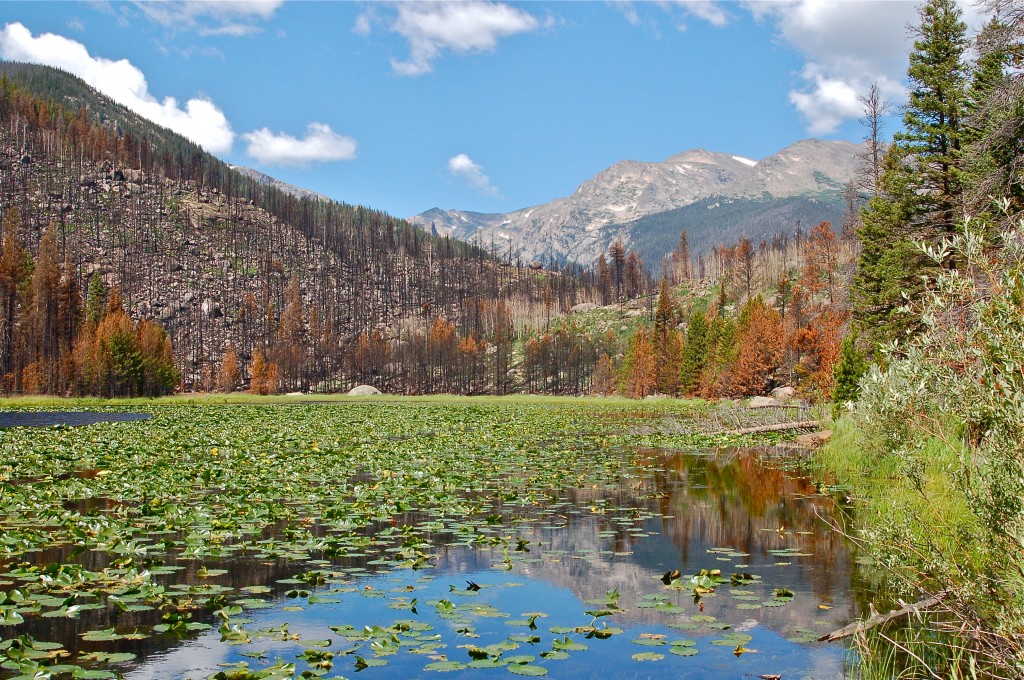
Cub Lake in Rocky Mountain NP. Pine beetle kill trees aided the Fern Lake Fire of Oct 2012.
TNEP: Was there moment or a project when you realized that this was interesting, important work?
AZ: I’ve been in this field for just over 5 years. I kind of fell into it. I started volunteering for the Democratic National Convention, their greening team and got put in touch with our founder who was looking for help on a big even they were doing during the DNC here in Denver called the Big Tent. I don’t know that I had a, “Oh this is cool” moment. I’ve secretly been an environmentalist my whole life. I was very pragmatic. I went to business school and never really thought I could have a career that allowed me to tap into my passion for the outdoors and the environment. I think by studying economics and finance was really important because that is the major driver for humans, for most things. I’m not a social scientist. I didn’t do environmental studies or a science, which is normally the path to this career. So having more people who understand the business side is important becuase it is such a driver.
I had an a-ha moment that said, as much as I thought I was a closet environmentalist my whole life, I didn’t know a tenth of the information that I know right now. I actually had about a 2-month period where i couldn’t sleep. I woud just sweat and wake up at night and just worry about everythat that was happening. My boyfirend at the time was telling me to chill out. Civilizaiton is not collapsing tomorrow, there are lot of smart people who understand the issues and you can’t do this to yourself. And he was right.
I’ve had to step back a little bit and not internalize so much and just say, “I’m a fighter. I’m a hopeful fighter.” I have hope that the human race is loving enough, strong enough, smart enough to figure this out. That’s my stance now, but I did have a crisis moment about 6 months into my career. It was just way to overwhleming.
TNEP: Is there an example of an interesting or fascinating opportunity that was presented to you by working in this field.
AZ: I think the biggest success story of the past year is the passage of Senate Bill 252, which was expansion of our renewable energy standard to rural Colorado. There were lots of opponents to this particular piece of legislation, but it just showed that Coloradans want more renewalbe energy on their grid. That they look at as the future and what we need to do. And we pushed it through. It took everyone working toegether to make that happen, including industry, including government, including non-profits, ranchers. There was pushback about cost incerease and whether rural Coloradans could absorb it, but there was a cap, a 2% rate cap put into the bill to ensure that working families wouldn’t be burdened with additional dollars spent on renewable energy. It increased the renewable energy standard for rural Colorado from 10% to 20% by 2020. We were the first state in the nation to pass a renewable energy standard, back in 2004. This showed that at a time when the politics of renewable energy are just as partisan as you could imagine, in a purple state we were able to do this.
I never looked at legislation as the answer. I still don’t think it’s the way that we should be doing things. But when there’s strong opposition, especially from industry or utilities, to something that makes sense and that people want, legislation is an amazing way to get things done and done quickly. I’m a convert. It’s not the answer I would want but if you don’t give us another option, if the market won’t do it, we have to do what’s right. So we passed some good policy.
TNEP: You come from a finance and background and you made the leap into the environmental field. Was it hard?
AZ: I made the leap. I got laid off in 2008 when Lehman Brothers crashed. I was working for a small mareting company that was doing student loans and Lehman Brothers was one of our biggest partners. Pretty much 80% of the company was let go overnight. That was hard.
Then I volunteered not thinking career path. I had time and I might meet some people, because I didn’t have a network here. It was tough initially because I almost took a half pay cut. It felt like a huge set back. You’re at a point in your career where you think your income is only going to increase. It wasn’t quite a 50% paycut, maybe 40%, but you make it work. It’s amazing. Since then I’ve been able to get my income back to where it was. Non-profits are on the lower level pay, much less than business. but once you get into more senior management roles at non-profits, you can live comfortably.
TNEP: You clearly have a passion for it and enjoy it. That goes such a long way.
AZ: It does. It does. People don’t look at non-profit work seriously becuase they are afraid of the financial consequences. That’s the fallacy I want to break. My important reality is that I do something I love with people I care about who are all passionate about this. If I can do that and get paid for it…I just won the lottery.
TNEP: I think what you just said is very important to what people in the environmental field are doing. It’s good to hear that from someone like yourself who is working so hard in the network and legislation and policy. I don’t see that side everyday.
AZ: I was thinking again about people not understanding what you do. Why don’t you just carry a picture of a water pipe with green sludge coming out of it and go, “See this, I try to prevent this from happening.”




